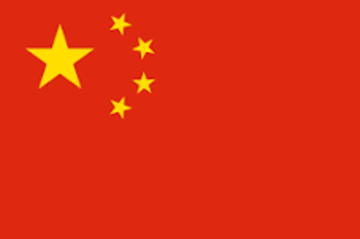Shenyang
City | City
Shenyang (UK: /ʃɛnˈjæŋ/, US: /ʃʌnˈjɒŋ/; simplified Chinese: 沈阳; traditional Chinese: 瀋陽; pinyin: Shěnyáng; Mandarin pronunciation: [ʂə̀n.jǎŋ]), formerly known as Fengtian (Chinese: 奉天, Mandarin pronunciation: [fə̂ŋtʰjɛ́n]) or by its Manchu name, Mukden (Manchu: ᠮᡠᡴ᠋ᡩᡝᠨ, IPA:/mukʰ.tən/), is a major Chinese sub-provincial city and the provincial capital of Liaoning province. Located in north-central Liaoning, it is the province's most populous city, with a total population of 9,070,093 inhabitants as of the 2020 census. Among the resident population of the city, the male population is 4,521,021, accounting for 49.85%; the female population is 4,549,072, accounting for 50.15%. The sex ratio of the total population (with women as 100, the ratio of men to women) dropped from 102.10 in the sixth national census in 2010 to 99.38. Its built-up (or metro) area encompassing 8 Shenyang urban districts and the 4 Fushun urban districts, was home to 8,192,848 inhabitants in 2020. It is also the largest city in Northeast China by urban population, with 7.49 million people (2020 census).
Shenyang is also the central city of one of the major megalopolises in China, the Greater Shenyang Metropolitan Area, which has a total population over 23 million. The city's administrative region includes the ten metropolitan districts of Shenyang proper, the county-level city of Xinmin, and two counties: Kangping and Faku.
Subject ID: 160374
MoreShenyang (UK: /ʃɛnˈjæŋ/, US: /ʃʌnˈjɒŋ/; simplified Chinese: 沈阳; traditional Chinese: 瀋陽; pinyin: Shěnyáng; Mandarin pronunciation: [ʂə̀n.jǎŋ]), formerly known as Fengtian (Chinese: 奉天, Mandarin pronunciation: [fə̂ŋtʰjɛ́n]) or by its Manchu name, Mukden (Manchu: ᠮᡠᡴ᠋ᡩᡝᠨ, IPA:/mukʰ.tən/), is a major Chinese sub-provincial city and the provincial capital of Liaoning province. Located in north-central Liaoning, it is the province's most populous city, with a total population of 9,070,093 inhabitants as of the 2020 census. Among the resident population of the city, the male population is 4,521,021, accounting for 49.85%; the female population is 4,549,072, accounting for 50.15%. The sex ratio of the total population (with women as 100, the ratio of men to women) dropped from 102.10 in the sixth national census in 2010 to 99.38. Its built-up (or metro) area encompassing 8 Shenyang urban districts and the 4 Fushun urban districts, was home to 8,192,848 inhabitants in 2020. It is also the largest city in Northeast China by urban population, with 7.49 million people (2020 census).
Shenyang is also the central city of one of the major megalopolises in China, the Greater Shenyang Metropolitan Area, which has a total population over 23 million. The city's administrative region includes the ten metropolitan districts of Shenyang proper, the county-level city of Xinmin, and two counties: Kangping and Faku.
Shenyang has passed through the control of many states and peoples in history. In the 14th century, Shenyang came under the control of the Ming dynasty. The city served as an important Chinese military stronghold during the Ming period. The Manchu people conquered Shenyang from the Ming in the 17th century and briefly used it as the capital of Qing dynasty China. In 1905, the Battle of Mukden took place south of Shenyang during the Russo-Japanese War. Japan's subsequent victory allowed Tokyo to annex the region west of the old city and to increase Japanese influence on Shenyang; in September 1931 the Mukden Incident led the Japanese to further invade and occupy the rest of Northeast China, forming the puppet state of Manchukuo. After the Japanese surrender in 1945, Shenyang remained a Kuomintang stronghold, but the Communists captured it in 1948 after the Liaoshen Campaign.
Along with its nearby cities, Shenyang is an important industrial center in China, and serves as the transportation and commercial hub of China's northeast—particularly involved in links with Japan, Russia and Korea. A center of heavy industry in China since the 1930s, and the spearhead of the Chinese central government's Northeast Area Revitalization Plan, the city has been diversifying its industry, including expanding into the service sector. Growing industries include software, automotive and electronics.
Shenyang is also a major city for scientific research, appearing among the top 200 science cities in the world as tracked by the Nature Index. The city is home to several major universities, notably Northeastern University and Liaoning University, members of China's prestigious universities in the Double First Class University Plan.
Shenyang literally means "the yang side of the Shen River" and refers to the location of the Hun River (formerly called the Shen River, 瀋水; Shěn Shuǐ), on the southern side of the city. According to Chinese naming tradition, a river's north bank and a mountain's south slope are angled more towards direct sunlight and thus are considered the "sunny," or "yang," side.
Subject ID: 160374
Subject ID: 160374

